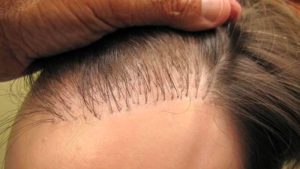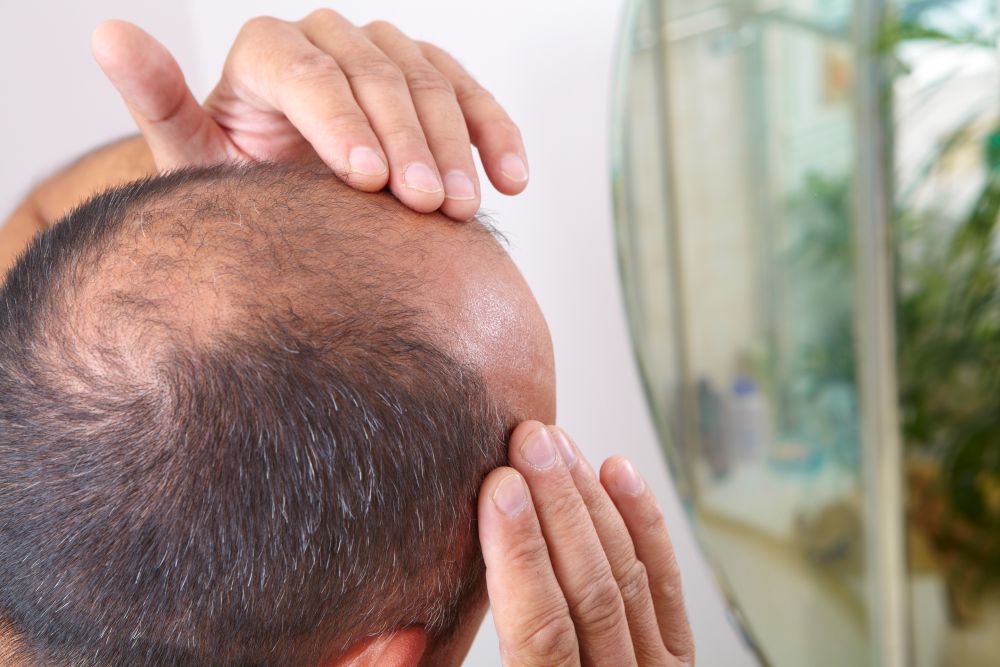Why Hair Transplants May Fail
Undergoing a hair transplant is an exciting prospect for many seeking to restore their confidence and appearance. However, it’s crucial to approach this decision with a realistic understanding: no medical procedure is 100% guaranteed. While countless successful hair transplant stories circulate, instances of failed hair transplants do occur, prompting questions like “why does hair transplant fail?” and “can a hair transplant fail?” This comprehensive guide delves into the various reasons why hair transplants fail and outlines the critical steps you must take to significantly increase the likelihood of a successful outcome.
Understanding Hair Transplant Failure
Defining hair transplant failure is key to understanding its implications. While some studies, like one from the ISHRS, suggest a “failure” rate around 43%, this often refers to patient dissatisfaction rather than a complete absence of growth. For medical professionals, a hair transplant is truly considered to have failed when the transplanted grafts (hair follicles) do not grow or survive in the recipient area.
There’s a stark contrast between professional clinics and those that lack proper standards. In reputable, specialized clinics with highly trained and experienced doctors, the failure rate for hair transplant procedures is remarkably low, often less than 2%. Conversely, clinics operating without proper accreditation, experienced staff, or stringent hygiene protocols can see failure rates soar up to 30% or even higher. This significant difference underscores the paramount importance of your initial choice of clinic and surgeon to avoid the disheartening experience of asking, “why did my hair transplant fail?”
What Causes Hair Transplant Failure?
The underlying causes of hair transplant failure are multifaceted. They range from technical surgical errors to patient-related factors. A thorough understanding of these elements is crucial for anyone considering this life-changing procedure.
Unqualified Practitioners and Subpar Surgical Techniques
One of the most significant contributors to hair transplant failure is the surgeon’s lack of experience or proper training. Hair transplantation is an intricate art and science. It demands precision, skill, and an in-depth understanding of hair growth patterns.
Inadequate Training and Specialization
Not all surgeons possess the same level of expertise across all hair transplant types. For instance, successfully performing Afro hair transplants requires specialized knowledge due to unique follicle characteristics. Many surgeons may be proficient in the fundamental Follicular Unit Extraction (FUE) technique. To clarify, FUE is solely for extracting grafts from the donor area; it’s not the transplantation method itself. These surgeons might lack the proficiency required for more advanced methods.
Misapplication of Advanced Techniques
The nuances of techniques like Direct Hair Implantation (DHI) and the Sapphire Pen technique are critical. DHI involves direct implantation of grafts using a Choi pen. It’s ideal for high density, hairline refinement, or no-shave procedures. The Sapphire Pen technique uses sapphire blades to create precise incisions before manual graft implantation. This offers faster healing and good density, though typically it’s less dense than DHI. An inexperienced surgeon attempting these advanced methods without adequate training can lead to poor graft survival and an unnatural appearance. This directly answers “why hair transplant fail” and contributes to concerns about “what causes a hair transplant to fail.”
Graft Mishandling and Poor Hairline Design
Hair grafts are delicate living tissues. Improper handling during extraction, storage, or implantation can severely compromise their viability. This includes crushing, dehydration, or incorrect orientation, leading to graft death. This is a common, yet often unseen, reason behind a fail hair transplant.
An unnatural or poorly designed hairline is a tell-tale sign of a botched hair transplant. The hairline frames the face. Its design requires artistic vision and technical skill to ensure a natural, age-appropriate look. An ill-conceived hairline cannot be easily corrected and can lead to significant patient dissatisfaction. This makes it a critical aspect of potential hair transplant failure.
Critical Importance of Post-Surgery Aftercare
Even with a perfectly executed surgery, the success of a hair transplant largely hinges on meticulous post-surgery aftercare. Patient non-compliance with post-operative instructions is a leading cause of “why did my hair transplant fail.”
Risks in Early Healing
The first few days and weeks after surgery are crucial for graft survival. Activities that create friction, pressure, or impact on the scalp can easily dislodge newly implanted grafts, preventing them from rooting. Examples include aggressive washing, scratching, wearing tight headwear, or sleeping in an incorrect position. This directly leads to areas of no growth.
Infection, Inflammation, and Environmental Factors
Poor hygiene practices or neglecting prescribed antibiotics can lead to infections in the recipient or donor areas. Untreated infections can compromise graft survival and result in scarring. Excessive inflammation, from various sources, can also hinder healthy graft integration and growth.
Environmental factors also play a role. Exposure to direct sunlight, extreme temperatures (very hot or cold showers), or engaging in strenuous activities that cause excessive sweating can negatively impact the healing process and graft survival. These factors stress the delicate newly transplanted grafts, making them vulnerable.
Biological and Patient-Specific Factors
While less common, certain biological factors and patient characteristics can influence the outcome of a hair transplant, sometimes leading to rejection or suboptimal results.
Hair Graft Rejection and Underlying Conditions
While rare, graft rejection can occur. This is typically not due to an immune response against foreign tissue (as the grafts come from the patient’s own body). Instead, it’s usually due to underlying scalp conditions. Conditions like Lichen Planopilaris (LLP), an inflammatory condition affecting hair follicles, can cause the body to attack its own hair follicles. This leads to the failure of both native and transplanted hair.
Insufficient Donor Hair and General Health
A successful hair transplant relies entirely on the availability of healthy grafts in the donor area (usually the back and sides of the scalp). Patients with severe baldness, such as Norwood scale 7, or those with very thin or sparse donor hair may not be ideal candidates. If the donor site lacks sufficient viable grafts, the desired density cannot be achieved. This leads to an unsatisfactory outcome often perceived as a failed hair transplant.
Certain systemic health conditions, such as uncontrolled diabetes, autoimmune disorders, or significant nutritional deficiencies, can impair healing and blood supply to the scalp. This affects graft survival. A thorough medical evaluation before the procedure is essential to identify and manage these risks.
Unrealistic Expectations and Progressive Hair Loss
While not a “medical” failure, unrealistic expectations are a primary driver of patient dissatisfaction. Patients expecting a full, dense head of hair from a limited donor supply or a complete restoration of their youthful hairline might feel their hair transplant failed even if it technically yielded good growth. Open and honest communication with your surgeon during the consultation phase is paramount to setting achievable goals. This explains why discussions like “hair transplant fail reddit” often highlight unmet expectations.
For individuals with ongoing genetic hair loss (androgenetic alopecia), a transplant only addresses the transplanted areas. Native hair surrounding the transplanted area may continue to thin or fall out over time. This can potentially create an uneven appearance if not managed with complementary treatments like Finasteride or Minoxidil. This is why sometimes a “crown hair transplant fail” can occur if the surrounding native hair continues to recede.

Maximizing Your Hair Transplant Success
To maximize your chances of a successful hair transplant and avoid scenarios like “turkish hair transplant fail,” take proactive measures.
1. Choose the Ideal Clinic and Surgeon
This is arguably the most critical step. Look for:
- Board-Certified and Experienced Surgeons: Prioritize surgeons with extensive experience specifically in hair transplantation. Verify their credentials, read patient reviews, and examine before-and-after photos.
- Specialization in Techniques: Ensure the clinic and surgeon are proficient in the specific technique best suited for your needs (e.g., DHI for high density, Sapphire FUE for precise channels).
- Reputation and Accreditation: Opt for clinics with a strong reputation, positive patient testimonials, and proper medical accreditations. A clinic’s commitment to patient care and hygiene is reflected in its reputation.
- Comprehensive Consultation: A reputable clinic will conduct a thorough consultation. This includes a detailed hair analysis, medical history review, and realistic discussion of expected outcomes. This helps avoid issues like “Causes Hair Transplant Failure” which might stem from poor initial assessment.
2. Confirm Your Eligibility
Be honest and thorough during your medical evaluation. If you have insufficient donor hair, underlying medical conditions, or unstable hair loss, a hair transplant may not be the right solution. In such cases, your surgeon should guide you towards alternative hair restoration techniques like Platelet-Rich Plasma (PRP) therapy, low-level laser therapy, or medical treatments.
3. Rigorously Follow Post-Surgical Instructions
This cannot be stressed enough. Your adherence to post-operative care is as vital as the surgery itself.
- Protect Your Scalp: Avoid touching, rubbing, or scratching the transplanted areas. Sleep with your head elevated to minimize swelling and prevent dislodging grafts.
- Gentle Washing: Follow your surgeon’s specific instructions for washing your hair. This usually involves gentle patting rather than rubbing. Use only recommended shampoos and solutions.
- Avoid Harmful Habits: Abstain from alcohol and smoking for the recommended period. They impair healing and blood flow. Avoid strenuous exercise that causes excessive sweating. Refrain from exposing your scalp to direct sunlight or extreme temperatures.
- Medication Adherence: Take all prescribed medications, including antibiotics and anti-inflammatory drugs, as directed. This helps prevent infection and manage discomfort.
What Does a Failed Hair Transplant Look Like, and What’s Next?
A failed hair transplant manifests in several ways. The most common signs include:
- Poor Growth or No Growth: Significant areas where transplanted grafts simply didn’t take root. This leaves patches of baldness or very sparse coverage.
- Unnatural Appearance: This can range from an unnaturally straight or low hairline, pluggy-looking grafts (especially with older techniques), or hair growing in the wrong direction.
- Scarring: Visible scarring in the donor or recipient areas, particularly if the extraction or implantation was performed poorly.
- Continued Hair Loss: While initial shedding of transplanted hair is normal, continued or accelerated loss of either transplanted or native hair beyond the typical shedding phase can indicate an issue.
If you find yourself facing a failed hair transplant, it’s disheartening, but there are options:
- Second Transplant with an Expert: For many, a revision surgery performed by a highly experienced and specialized surgeon can correct previous issues. It can improve density and refine the hairline.
- Alternative Hair Restoration: If a second transplant isn’t feasible due to limited donor supply or other factors, options like PRP therapy (which can stimulate existing follicles and improve overall scalp health) or low-level laser therapy might be considered.
- Cosmetic Solutions: For those who cannot or choose not to undergo further medical procedures, cosmetic solutions like high-quality wigs, hair systems, or scalp micropigmentation can effectively conceal hair loss.
A Lifetime of Results with Proper Care
Hair transplants are considered a permanent solution for hair loss. The transplanted grafts from the donor area are genetically resistant to the hormones that cause male pattern baldness. Most successful transplants offer a lifespan of 20 years or more, and under ideal circumstances, can truly last a lifetime. It’s important to remember that initial shedding of newly transplanted hair around three weeks post-surgery is a normal part of the process, making way for new, permanent growth. Typically, new hair growth begins around three months after the transplant and continues to mature over the following 9-12 months.
By meticulously researching your surgeon, ensuring your eligibility, and diligently following all post-operative instructions, you can significantly enhance your chances of achieving a natural-looking, long-lasting hair transplant result. This helps you avoid the common pitfalls and questions like “what if hair transplant fail” that plague less informed journeys.
Frequently Asked Questions About Hair Transplant Failure
A common reason for hair transplant failure is the patient's failure to follow all post-op instructions. Everything from diet, hair care routine, and sleeping posture can affect results. Other causes include untrained doctors, poor graft handling, or underlying scalp conditions that lead to graft rejection.
Hair transplants fail primarily due to untrained doctors using outdated or incorrect techniques, bad post-surgery aftercare by the patient, or rare instances of hair graft rejection caused by conditions like Lichen Planopilaris. Insufficient donor hair can also lead to an unsatisfactory outcome.
A crown hair transplant can fail if there's insufficient donor hair for adequate density, if the surgeon lacks expertise in implanting grafts in this specific area, or if the patient experiences ongoing progressive hair loss of native hair surrounding the transplanted grafts in the crown.
Several factors can cause a hair transplant to fail: an unqualified surgeon who mishandles grafts or uses incorrect techniques (like misapplying DHI or Sapphire Pen), the patient's neglect of post-surgical instructions, hair graft rejection due to certain medical conditions, or a lack of sufficient healthy donor hair for transplantation.
Some hair transplants fail due to a combination of factors. These include clinics with unprofessional practices and untrained doctors (leading to higher failure rates than professional clinics), patients not adhering to crucial post-surgery aftercare, and in rare cases, biological issues such as hair graft rejection or inadequate donor hair supply.

